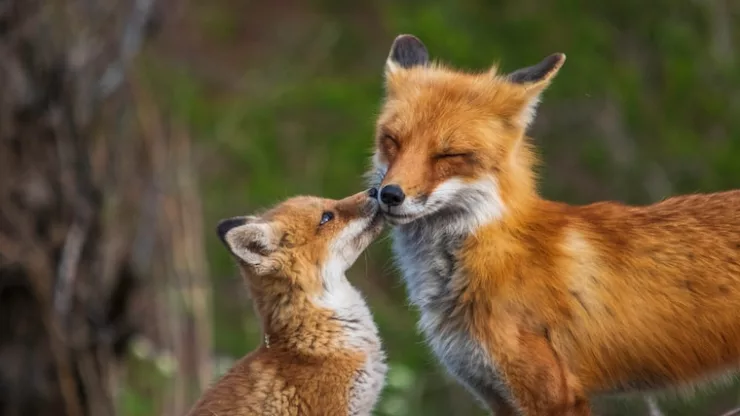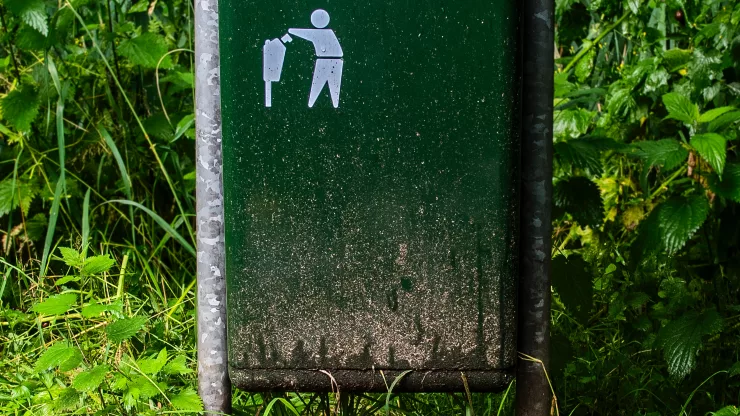Urban pigeons are a common sight in cities around the world. These birds are often seen congregating around parks, plazas, and other public areas.
While they may seem like harmless creatures, there is much more to these birds than meets the eye.
In this article, we will explore the fascinating world of the urban pigeon’s diet, the impact they have on human health, and how to manage their populations.
Jump to Section
Introduction
Pigeons have been living in urban areas for centuries.
These birds have adapted to the urban environment and have learned to survive on the food sources that are available to them.
While their diet may seem unappetizing to humans, it is perfectly suited to their needs.
In this article, we will take a closer look at the urban pigeon’s diet and explore the impact they have on human health.
Understanding the Urban Pigeon’s Diet
Urban pigeons are omnivorous, which means that they eat both plant and animal matter.
They are opportunistic feeders and will eat just about anything that is available to them.
Some of the common food sources for urban pigeons include:
- Grains (such as wheat, corn, and oats)
- Seeds (such as sunflower seeds and pumpkin seeds)
- Fruits (such as berries and apples)
- Insects (such as ants and beetles)
- Small animals (such as snails and worms)
The Nutritional Value of the Urban Pigeon’s Diet
The urban pigeon’s diet may seem like a mishmash of different foods, but it actually provides them with all the nutrients they need to survive.
Let’s take a closer look at the nutritional content of some of the pigeon’s main food sources.
Examining the Pigeon’s Main Food Sources
Grains
Grains are a major component of the urban pigeon’s diet. These birds will often feed on spilled grain from livestock feeders or grain silos.
Grains are a good source of carbohydrates and protein, which are essential for energy and growth.
Seeds
Seeds are another important food source for urban pigeons.
These birds will often feed on seeds that have fallen from trees or plants. Seeds are a good source of fat and protein, which are essential for maintaining health and energy levels.
Fruits
Fruits are a tasty treat for urban pigeons. These birds will often feed on fruit that has fallen from trees or been discarded by humans.
Fruits are a good source of vitamins and minerals, which are essential for maintaining health and preventing disease.
Analyzing the Nutrient Content of the Pigeon’s Diet
While the urban pigeon’s diet may seem like a hodgepodge of different foods, it actually provides them with all the nutrients they need to survive.
Let’s take a closer look at the nutrient content of some of the pigeon’s main food sources.
| Food Source | Nutrient Content |
|---|---|
| Grains | Carbohydrates, protein |
| Seeds | Fat, protein |
| Fruits | Vitamins, minerals |
The Impact of Urban Pigeons on Human Health
While urban pigeons may seem harmless, they can pose a threat to human health.
Let’s take a closer look at some of the ways that urban pigeons can impact human health.
The Spread of Diseases and Parasites
Urban pigeons can carry a variety of diseases and parasites that can be transmitted to humans. Some of the most common diseases associated with urban pigeons include:
- Salmonella
- E. coli
- Histoplasmosis
- Cryptococcosis
The Negative Effects of Pigeon Droppings
Pigeon droppings can be a nuisance and can cause damage to buildings and other structures.
They can also pose a health risk to humans, as they can contain harmful bacteria and parasites.
In addition, pigeon droppings can create unsanitary conditions that are attractive to other pests, such as rats and mice.
Managing Urban Pigeon Populations
Managing urban pigeon populations is important for maintaining a healthy and safe environment for humans and birds alike.
Let’s take a closer look at some of the ways that urban pigeon populations can be managed.
Controlling Pigeon Populations Humanely
One way to control urban pigeon populations is through humane methods, such as birth control measures or relocation programs.
These methods can help to reduce the number of pigeons in a given area without harming them.
Encouraging Natural Predators
Another way to control urban pigeon populations is by encouraging natural predators, such as hawks or falcons.
These birds of prey can help to keep pigeon populations in check by hunting them in urban areas.
Improving Urban Environments to Discourage Pigeon Habitation
Improving urban environments can also help to discourage pigeon habitation.
This can include removing food sources, such as garbage cans or open-air restaurants, or installing spikes or netting to prevent pigeons from roosting in certain areas.
Striking a Balance between Pigeon and Human Needs
Finding a balance between the needs of urban pigeons and humans is important for maintaining a healthy and safe environment for all.
By understanding the urban pigeon’s diet and the impact they can have on human health, we can work together to manage their populations in a humane and effective way.
FAQ
What do urban pigeons eat?
Urban pigeons are omnivorous and will eat a variety of foods, including grains, seeds, fruits, insects, and small animals.
Can urban pigeons carry diseases?
Yes, urban pigeons can carry a variety of diseases and parasites, including salmonella, E. coli, histoplasmosis, and cryptococcosis.
How can urban pigeon populations be managed?
Urban pigeon populations can be managed through humane methods, such as birth control measures or relocation programs, or by encouraging natural predators, such as hawks or falcons.
Improving urban environments can also help to discourage pigeon habitation.
I’m a nature enthusiast and creator of Metro Wilds and have spent years exploring the great outdoors.
With a passion for environmental conservation and sustainability, I have dedicated my career to writing about the beauty and wonders of nature, as well as the threats facing our planet.
Contact me at [email protected] for assistance.





